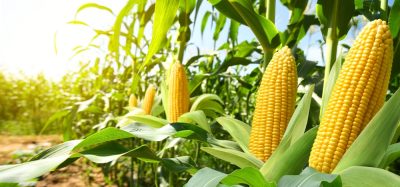Water plant could improve food security after disasters, says study
- Like
- Digg
- Del
- Tumblr
- VKontakte
- Buffer
- Love This
- Odnoklassniki
- Meneame
- Blogger
- Amazon
- Yahoo Mail
- Gmail
- AOL
- Newsvine
- HackerNews
- Evernote
- MySpace
- Mail.ru
- Viadeo
- Line
- Comments
- Yummly
- SMS
- Viber
- Telegram
- Subscribe
- Skype
- Facebook Messenger
- Kakao
- LiveJournal
- Yammer
- Edgar
- Fintel
- Mix
- Instapaper
- Copy Link
Posted: 26 February 2024 | New Food | No comments yet
Penn State researchers claim Carolina azolla, a rapid-growth water plant rich in protein, could be a disaster food solution.


Azolla plants are water-plants native to temperate climates
An often-overlooked water plant that can double its biomass in two days, capture nitrogen from the air — making it a valuable green fertiliser — and be fed to poultry and livestock could serve as life-saving food for humans in the event of a catastrophe or disaster, a new study led by Penn State researchers suggests.
Native to the eastern US, the plant, azolla caroliniana Willd (commonly known as Carolina azolla) also could ease food insecurity in the near future, according to findings recently published in Food Science & Nutrition. The researchers found that the Carolina strain of azolla is more digestible and nutritious for humans than azolla varieties that grow in the wild and also are cultivated in Asia and Africa for livestock feed.
The study, which was led by Daniel Winstead, a research assistant in the labs of Michael Jacobson, professor of ecosystem science and management, and Francesco Di Gioia, assistant professor of vegetable crop science, is part of a larger interdisciplinary research project called Food Resilience in the Face of Catastrophic Global Events conducted in the College of Agricultural Sciences.
“Other species of azolla have been used across the world for several thousand years as a livestock feed and as ‘green manure’ to fertilize crops because of the plant’s ability to fix nitrogen,” Jacobson said.
“The use of azolla for human consumption was thought to be limited by its high total polyphenolic content, which interferes with its digestibility. But this research demonstrates that the phenolic content of the Carolina strain is much lower, and cooking the plant diminishes it further.”
The research team says polyphenols, which are naturally abundant compounds found in plants, are beneficial to human health at lower concentrations because of their antioxidant activity. However, high concentrations of polyphenols can limit nutrient absorption in the body and act as antinutritional factors, Jacobson explained. Gallic acid is a stable phenol and has become a standard measurement to determine phenol content in food.
The researchers tested three cooking methods — boiling, pressure cooking and natural fermentation, with the aim of reducing antinutritional factors potentially restricting consumption of azolla by both humans and livestock. Tests showed total phenol content was reduced by 88 percent, 92 percent and 62 percent with boiling, pressure cooking and natural fermentation, respectively, compared to the raw plant.
Winstead claims the plant holds excellent potential for use as a fast-growing, short-season crop that requires minimal inputs, upkeep and processing, adding that the plant could be used to increase the food supply.
“Our study highlights the nutritional value and moderate protein content of Carolina azolla and demonstrates that cooking methods easily and significantly reduce total phenolic content,” he said. “Azolla’s moderate protein and high mineral yields make this species desirable for cultivation.”
The easy, fast-growing nature of azolla cultivation makes it an ideal resource during disasters and catastrophes, as well as for regular use by smallholder farms and low-income areas, the researchers said. It is a multipurpose wild edible plant that holds great potential for economic, agricultural, nutritional and resiliency benefits, but needs further development, they said.
“Whether it be for a ‘quick-fix’ solution in catastrophe scenarios or long-term resilience plan, Carolina azolla has the potential to provide large amounts of protein and calories for people and livestock,” he said, noting that the plant has even been considered for inclusion in the U.S. space program.
“If systems for azolla cultivation and preparation can be made more efficient, its indoor or outdoor cultivation after natural disasters could provide supplemental nutrient production that are climate resilient.”
Related topics
Food Security, Health & Nutrition, Research & development, Technology & Innovation









